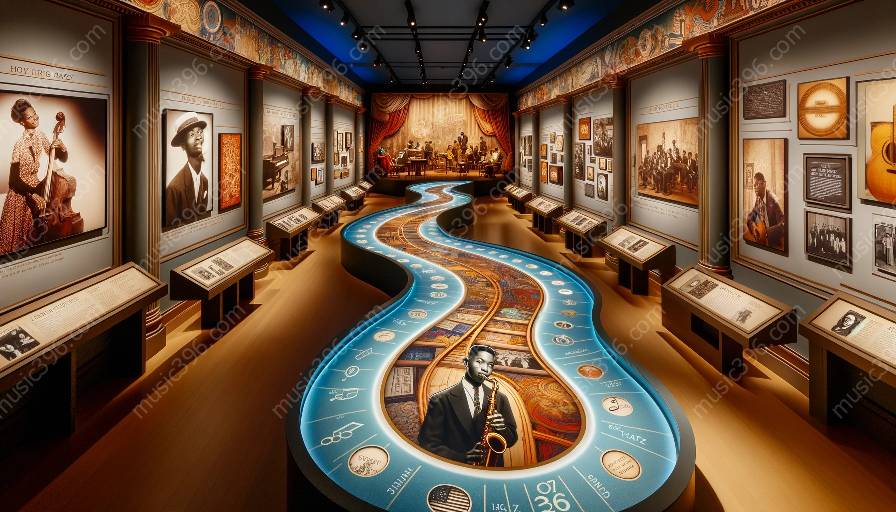Jazz, with its origins in the late 19th and early 20th centuries, has undergone a remarkable evolution. One of the pivotal factors in the dissemination and popularization of jazz has been the recording industry. This article explores the ways in which the recording industry has influenced the spread of jazz music and its impact on the evolution of jazz, in the context of jazz studies.
Early Influence of the Recording Industry on Jazz
As jazz emerged and gained popularity in the early 20th century, the recording industry played a significant role in bringing jazz to a broader audience. With the invention of the phonograph, jazz recordings became a means of dissemination, allowing the music to reach beyond live performances and into the homes of listeners.
Record labels such as Columbia and RCA Victor began to recognize the potential of jazz as a commercial product and started recording and distributing jazz music. These recordings not only introduced jazz to a wider audience but also contributed to the preservation of jazz performances and compositions, allowing future generations to study and appreciate the art form.
Technological Advancements and Their Impact
The recording industry's influence on jazz dissemination continued to grow alongside technological advancements. The introduction of radio further propelled the exposure of jazz music, making it more accessible to people across geographical boundaries. With the advent of radio broadcasts, jazz recordings could be featured on air, reaching audiences that were previously inaccessible through traditional record sales.
Moreover, the development of recording technologies, such as the transition from shellac 78 RPM records to vinyl LPs and the eventual arrival of digital recording, revolutionized the production, distribution, and consumption of jazz music. These technological innovations not only improved the quality of recordings but also provided new opportunities for jazz musicians to experiment with their sound and reach broader audiences.
Global Impact and Cultural Exchange
The recording industry facilitated the global dissemination of jazz, contributing to its influence beyond national borders. Jazz recordings were exported and shared internationally, leading to cross-cultural exchanges and the integration of diverse musical influences into jazz music. The dissemination of jazz through recordings played a vital role in shaping the evolution of the genre, as it absorbed elements from different cultures and traditions.
Furthermore, the recording industry's role in disseminating jazz internationally sparked interest in jazz studies and academic research. Scholars and educators began to analyze recordings from various eras and regions, leading to a deeper understanding of jazz's historical and cultural significance.
Evolution of Jazz Studies
Jazz studies have been profoundly impacted by the dissemination of jazz music through the recording industry. As recordings became more accessible, they provided invaluable resources for jazz educators and students. Listening to historical recordings allowed aspiring jazz musicians and scholars to study the techniques, improvisational styles, and compositions of legendary jazz artists, enriching their understanding of the art form.
Moreover, the availability of jazz recordings fueled the growth of academic programs and courses focused on jazz studies. Universities and conservatories began offering specialized degrees in jazz performance, composition, and history, recognizing the importance of preserving and studying jazz as a distinct form of musical expression.
Contemporary Influence and Digital Platforms
In the digital age, the recording industry continues to shape the dissemination of jazz music. Online streaming platforms, social media, and digital downloads have transformed the way jazz is distributed and consumed. Jazz musicians now have the ability to independently release their music, reaching global audiences without traditional record label support.
Additionally, the accessibility of jazz recordings through online platforms has further expanded the reach of jazz studies. Students and enthusiasts can explore a vast archive of jazz recordings, interviews, and documentaries, gaining insights into the evolution of jazz and its varied styles and influences.
Conclusion
The recording industry has played a pivotal role in influencing the dissemination of jazz music and has significantly impacted the evolution of jazz. From the early phonograph recordings to the digital era, the recording industry has shaped the accessibility, preservation, and global reach of jazz music. Furthermore, its influence on jazz studies has propelled the academic understanding and appreciation of jazz as a distinctive art form. As the recording industry continues to evolve, its ongoing impact on the dissemination and study of jazz music remains a vital part of the genre's enduring legacy.





























